
 In 1955, a Colorado Springs-based Sears store ran an advertisement encouraging children to call Santa Claus on a special telephone hotline. Due to a printing error, the phone number that was printed was the hotline for the Director of Operations at the Continental Air Defense (CONAD). Colonel Harry Shoup took the first Santa call on Christmas Eve of 1955 from a six-year old boy who began reciting his Christmas list. Shoup didn't find the call funny, but after asking the mother of the second caller what was happening, then realizing the mistake that occurred, he instructed his staff to give Santa's position to any child who called in.
In 1955, a Colorado Springs-based Sears store ran an advertisement encouraging children to call Santa Claus on a special telephone hotline. Due to a printing error, the phone number that was printed was the hotline for the Director of Operations at the Continental Air Defense (CONAD). Colonel Harry Shoup took the first Santa call on Christmas Eve of 1955 from a six-year old boy who began reciting his Christmas list. Shoup didn't find the call funny, but after asking the mother of the second caller what was happening, then realizing the mistake that occurred, he instructed his staff to give Santa's position to any child who called in.Listen to Colonel Shoup talk about the experience.
Needless to say many children and parents were delighted to receive this information. Little did they know that a tradition had been born.
Three years later, the governments of the United States and Canada combined their national domestic air defenses into the North American Aerospace Defense Command (NORAD), but the tradition continued. Now major media outlets as well as children call in to inquire on Santa's location. NORAD relies on volunteers to help make Santa tracking possible. Many employees at Cheyenne Mountain and Peterson Air Force Base spend part of their Christmas Eve with their families and friends at NORAD's Santa Tracking Operations Center in order to answer phones and provide Santa updates to thousands of callers.
View at YouTube
About 800 service members and their families volunteer, and shift run from 2 a.m. MST December 24 to 2 a.m. Christmas morning.
In 1997, Canadian Major Jamie Robertson took over the program and expanded it to the Web where corporation-donated services have given the tradition global accessibility. In 2004, NORAD received more than 35,000 e-mails, 55,000 calls and 912 million hits on the Santa-tracking website from 181 countries. In 2005, more than 500 volunteers answered questions. In 2006 half a million calls and over 12,500 e-mails were handled from 210 territories. The site now gets well over 1 billion hits.
NORAD details its tracking system:
Detecting Santa all starts with the NORAD radar system called the North Warning System. This powerful radar system has 47 installations strung across the northern border of North America. NORAD makes a point of checking the radar closely for indications of Santa Claus leaving the North Pole on Christmas Eve.
The moment our radar tells us that Santa has lifted off, we use our second mode of detection, the same satellites that we use in providing warning of possible missile launches aimed at North America. These satellites are located in a geo-synchronous orbit (that's a cool phrase meaning that the satellite is always fixed over the same spot on the Earth) at 22,300 miles above the Earth. The satellites have infrared sensors, meaning they can detect heat. When a rocket or missile is launched, a tremendous amount of heat is produced - enough for the satellites to detect. Rudolph's nose gives off an infrared signature similar to a missile launch. The satellites can detect Rudolph's bright red nose with practically no problem. With so many years of experience, NORAD has become good at tracking aircraft entering North America, detecting worldwide missile launches and tracking the progress of Santa, thanks to Rudolph.
The third detection system we use is the Santa Cam. We began using it in 1998 - the year we put our Santa Tracking program on the Internet. NORAD Santa Cams are ultra-cool high-tech high-speed digital cameras that are pre-positioned at many places around the world. NORAD only uses these cameras once a year - Christmas Eve. The cameras capture images of Santa and the Reindeer as they make their journey around the world. We immediately download the images on to our web site for people around the world to see. Santa Cams produce both video and still images.
The fourth detection system we use is the NORAD jet fighter. Canadian NORAD fighter pilots, flying the CF-18, take off out of Newfoundland to intercept and welcome Santa to North America. Then at numerous locations in Canada other CF-18 fighter pilots escort Santa. While in the United States, American NORAD fighter pilots in either the F-15 or F-16 get the thrill of flying with Santa and the famous Reindeer Dasher, Dancer, Prancer, Vixen, Comet, Cupid, Donner, Blitzen and Rudolph. About a dozen NORAD fighters in Canada and the United States are equipped with Santa Cams.
This year NORAD will be going live with its webcast and instead of hourly updates they will be in real time.
There are people who say that Santa Claus could not travel the whole world in one night. But they forget that Santa is a magical being, and magical beings can defy the laws of physics.
The fact that Santa Claus is more than 16 centuries old, yet does not appear to age, is our biggest clue that he does not work within time as we know it. His Christmas Eve trip may seem to take around 24 hours, but to Santa it may last days, weeks or even months in standard time. Santa would not want to rush the important job of distributing presents to children and spreading Christmas happiness everyone, so the only logical conclusion is that Santa functions within a different time-space continuum than the rest of us do.
To watch out for Santa via NORAD go here
Remember to leave out your milk and cookies for Santa and a carrot or two for the reindeer.






























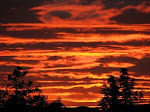.jpg)









.jpg)


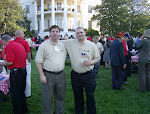

























































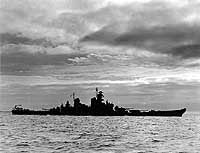





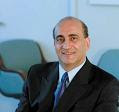

.jpg)

.jpg)











.jpg)
















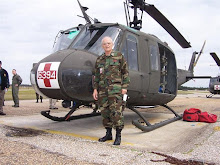


No comments:
Post a Comment